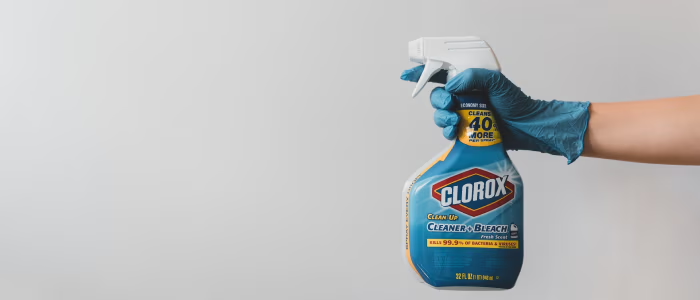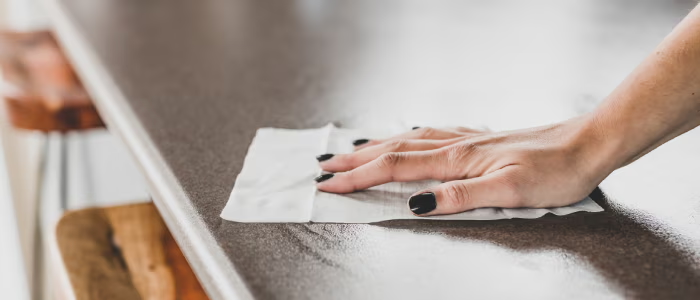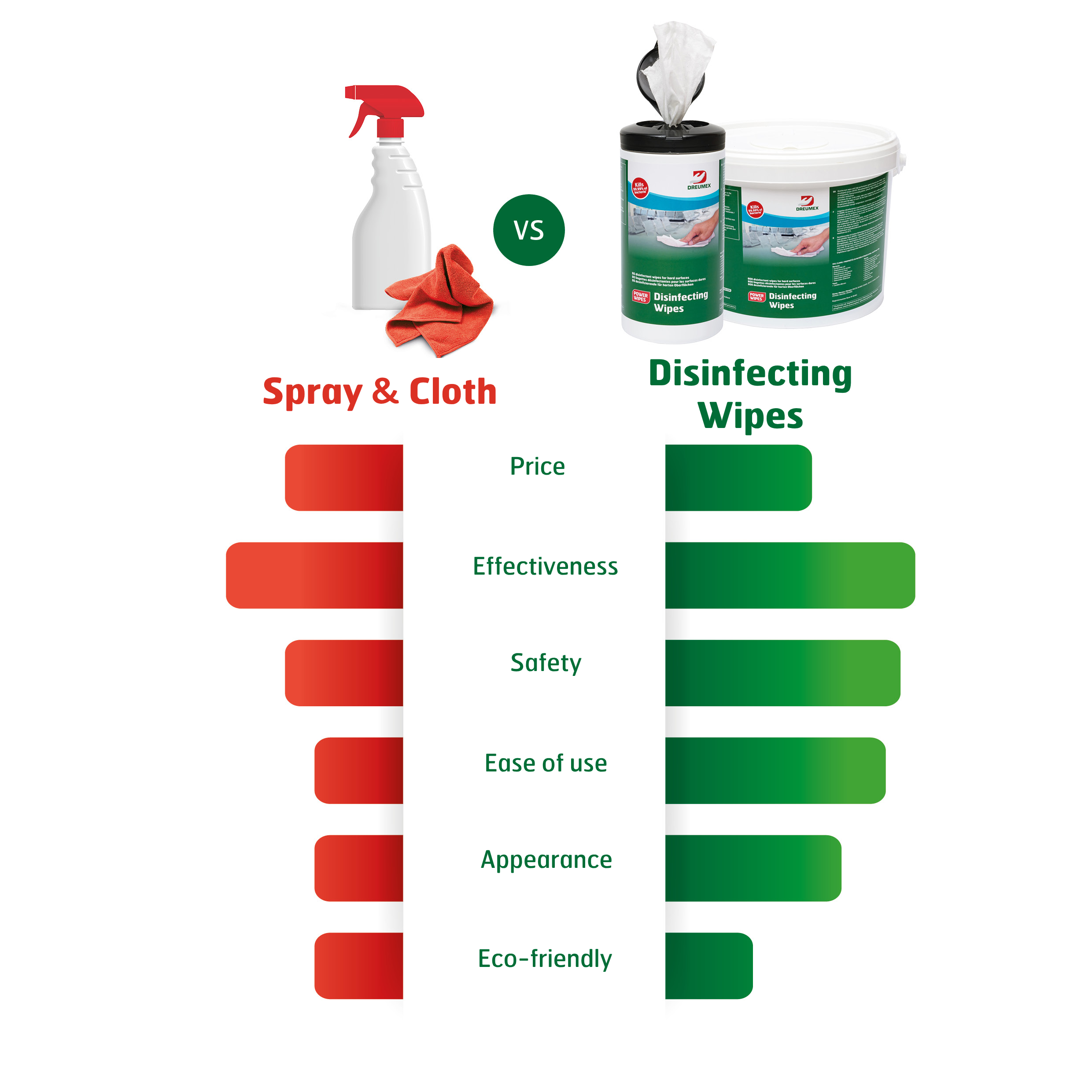Disinfection Spray or Wipes? The Pros and Cons at a Glance
For years, spray bottles and cleaning cloths (microfibres and paper) have been the most popular disinfectant solution that companies use. Although this system has advantages, many inherent limitations are noted.
We list all the pros and cons.
1. Disinfection Spray

Advantage 1: Price
It is not surprising that the spray system is standardised in many companies. When you compare this system with the alternatives, the economic impact is relatively low. ,This makes it attractive for companies as hygiene is not always the top priority.
Limitation 1: Requires training
We often see that untrained personnel use this system, resulting in incorrect actions being taken. Think of incorrect mixing of chemicals, not wearing protection during mixing and inhaling chemicals that are released into the air. Besides the fact that untrained personnel increase the risk of accidents, it also has a negative impact on the effectiveness of disinfection.
Limitation 2: Care of surface and equipment
There is a correct and incorrect way to disinfect surfaces or equipment. If users are not trained for this, repeatedly spraying a liquid on a surface can lead to expensive repairs or permanent damage. Disinfectants should generally always be sprayed on a cloth and not directly on a surface. Nevertheless, we see that this often goes wrong in practice. An example of this are gyms where sprays and paper towels are available. The user sprays directly on expensive devices and then wipes them with a paper towel.
Limitation 3: Leaves paper residue
When a spray bottle is combined with a paper towel, it often leaves paper residue. This will lead to additional actions, as the residue also needs to be removed. This can also have negative consequences on the effect of the disinfectant. When cleaning with another cloth too early, the effectiveness of the bacteria and virus killing chemicals is considerably reduced.
Limitation 4: Hazardous chemicals in the air
The use of a spray releases dangerous chemicals. These substances are not always properly collected by the cloth, thereby ending up in the air. Also, these substances increase the risk of health problems. Think of a waiting room at a GP surgery or a nursery, where vulnerable people or children breathe in this air.
Conclusion:
Despite the fact that a disinfection spray in combination with a cleaning cloth is popular and can be effective, we note several limitations and risks that can have problematic consequences. In America, we see that companies increasingly use a 'No Spray' policy. There is a growing need for a safer alternative to disinfection.
2. Disinfection Wipes

Since the year 2000, we have seen organic growth in the disinfection wipes market. Although America is the largest buyer, we are seeing a significant increase in demand in countries such as Germany, France, England, and the Benelux. Phillip Mango predicted in his research “The Future of Cleaning and Disinfecting Wipes to 2020” that in 2020 the entire European market will generate approximately 700 million turnover. What makes this growth possible?
Success factor 1: Increased effectiveness of the active ingredients
In 2017, the U.S. Institute for Antimicrobial Resistance and Infection Control concluded that wipes show the highest ATP reduction on surfaces. Because the wipes are already impregnated with the correct ratio of active ingredients, fewer substances are lost and the disinfectant works more effectively.
Success factor 2: Safety
Disinfectant wipes always have the right ratio that has been researched and tested by experts. This eliminates the risk of harmful chemicals from the spray being released and inhaled by the user.
Success factor 3: Ease
The wipes and the chemicals come in one convenient package. Grab a cloth, use it and the wipe can go straight into the trash. No additional actions are required.
Success factor 4: Presentation
Disinfection wipes often come with a dispenser that is easy for staff to operate. In addition to providing a professional look, it also reduces the spread of bacteria. When using a disinfectant wipe that is located in a dispenser, you reduce the contact moments. This minimises the spread of bacteria and viruses.
Risk factor 1: Environment
When disinfection wipes are deposited in a toilet, this can have negative consequences for the environment. In 2016, The Guardian reported that in the past 10 years the number of wipes detected around the coastline has increased by 400%. Dreumex therefore strongly recommends disposing of the disinfection wipes in a waste container.
Conclusion:

Disinfection wipes are a modern disinfection solution. They demonstrate the same power as the spray, but without the additional limitations. We recommend that companies standardise this system. Not only is it more efficient but it also reduces risk for both your employees and customers. However, it should be taken into account that the disinfectant wipes must be correctly disposed of in the trash. Read more about disinfectant wipes here.

